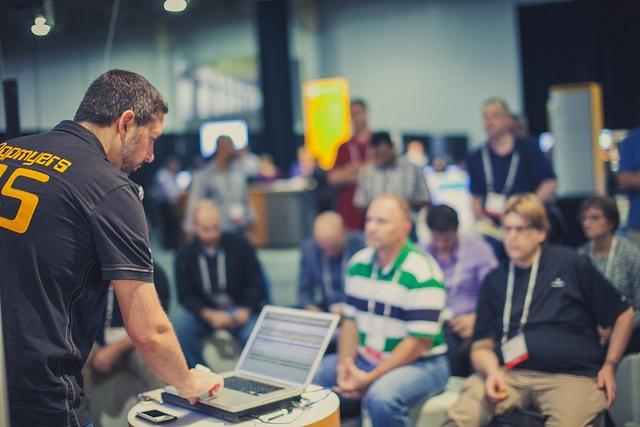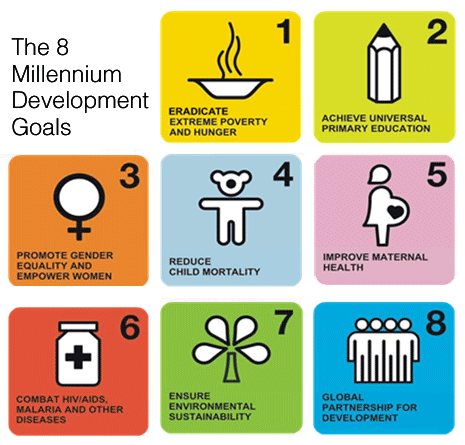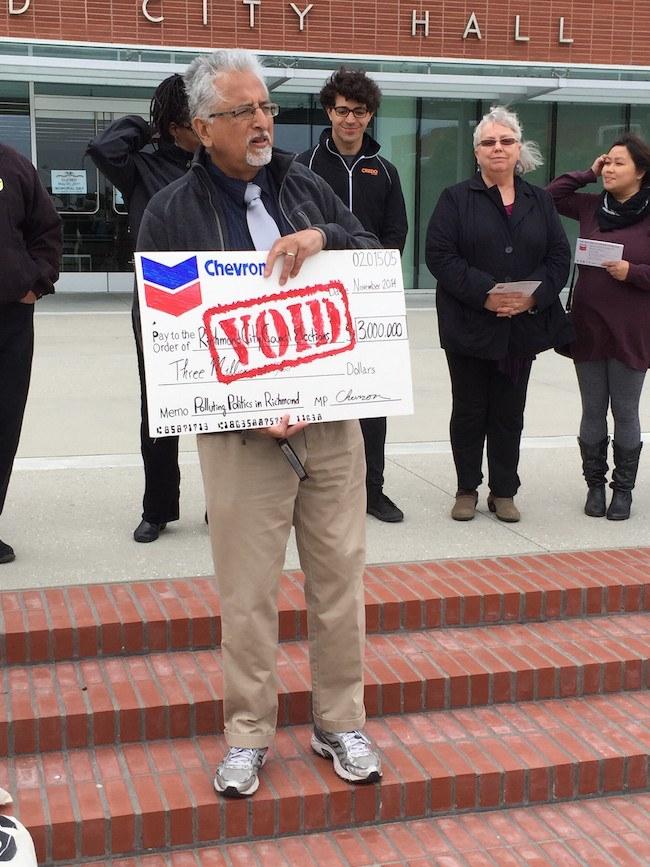These Gadgets Make Your Bicycle Commute Safe and Fun


Companies say a large chunk of their carbon footprints come from employees driving to work. For example, REI states that about 34 percent of its operational greenhouse gas emissions are due to employee commutes. So, how can companies lighten that footprint and encourage employees to bike to work? Make it easy, safe and fun. Emphasize the benefits. Give them free bicycles to use, have places to park them, and have hot showers available. Also, set the example by bicycling to work yourself.
Bicycling not only helps preserve the earth. It also makes us happier and healthier. Unless you ride an electric bike, you’ll get exercise, and exercise creates happy dopamine chemicals in your brain. Studies also show that exercising and being outdoors reduces stress, energizes you, boosts your confidence and helps you sleep better. When you bike to work the environment thrives, you save money and you’re considered hip. It’s a win, win, win.
To help companies improve their environmental impact and to help you exercise, here’s a list of the newest bike gadgets that will help you pedal around town safely.
1. Copenhagen Wheel
All you have to do to turn your bike into this smart electric hybrid is replace your back wheel with the Copenhagen Wheel.
2. LifePaint
Volvo’s vision is that, by 2020, no one will be seriously injured or killed by a Volvo. The company's motto is: “The best way to survive a crash is to not crash.” Makes sense.
3. LED Turn Signal Gloves
The future of biking to work
Soon, running with your dog may turn into biking with your drone. As you bike, the drone will fly in front or behind you to alert you to danger, and hopefully drivers won’t be so distracted that they hit you.
Or perhaps you’ll decide to commute on the Raht Racer, a three-wheeled bike that can zoom up to 70 miles per hour, so you can take it on highways. (Check it out below.) A bike that goes 70 mph on a highway sounds perfectly safe. No danger there.
Urban designers have figured out how to create safe intersection crossing for bicyclists. Like most bike innovations, the Dutch came up with the idea first. There are four main elements to the intersection design: corner refuge island, forward stop bar for bicyclists, a setback bike crossing, and bicycle-friendly signal phasing. If you’re confused, watch the animated film below. The design looks like a really cool pinball game.
Better yet, maybe your neighborhood will decide to ban cars. Like this town in South Korea that banned cars for one month and had an Ecomobility Festival to help residents get an idea of how the future could be.
* Image credit: drburtoni, Flickr
British public urged to go plastic-free this June


The Marine Conservation Society (MCS), the UK’s leading marine charity, is challenging people to give up their convenience lifestyle and ditch pre-packed sandwiches, ready meals and plastic bottled drinks on the go for the whole of June.
Almost 600 members of the public have already signed up to take part in the MCS Plastic Challenge and the charity says it’s amazed at the lengths people will be going to, to find products that don’t contain plastic of any kind. The charity says it highlights how reliant we have become on plastic which is reflected in the amount already known to be turning parts of our oceans into a ‘plastic soup’.
Since the charity began monitoring beach litter levels around the UK over 20 years ago, the amount of plastic bits and pieces has increased by 180%, causing an increasing threat to marine life. Plastic bags, bottles and tiny plastic pieces are regularly found in the stomachs of turtles and other sea creatures, and in some cases have caused their death from starvation or choking.
“We want to change people's attitudes towards single use plastics, and to encourage people to value plastic as a resource – not just buying stuff without any thought of the environmental impact,” said Dr Sue Kinsey, MCS Senior Pollution Policy Officer. “People taking on the Plastic Challenge are often shocked to find out just how much single use plastic is used every day. Have a go at the Plastic Challenge, even if you can only manage a single day, and you'll never look at your shopping in the same way again!”
You can take part in the Plastic Challenge here.
WWF calls for stiffer measures to ensure legality of logged wood


A new WWF-UK study has raised concerns about the ability of some UK companies to prove where their wood supply comes from.
The WWF study was designed to see if companies that were selling non-EUTR covered products (eg: chairs, musical instruments, toys) had done sufficient checks to ensure they were at least made from wood from legal sources. In nearly a third of the products sent for laboratory analysis, the results found that the wood was different to the one declared by the retailer, and nearly half of the companies were selling products made from timber from areas that experience high levels of illegal logging.
Julia Young, Mmanager of WWF’s Global Forest and Trade Network programme at WWF-UK explained: “We purchased goods from 17 companies, and not one could provide evidence that they had carried out sufficient due diligence. We cannot continue to have a market where customers cannot be sure the product they buy is made from the wood declared. In the absence of better information from companies that their wood has come from a legally or sustainably logged forest, customers are in the dark.
“We’re calling for improvements to the EUTR, as currently companies can still legally sell certain products that have been made of illegally logged wood. We also want far more transparency on sourcing practices and performance.
“We are heartened that as a result of this work, new businesses are now engaging with us to find out how to improve their due diligence, and 40 others have already signed up to our campaign. The forest campaign involves a pledge to buy from legal and sustainable sources. This is the right way to go and we want more companies to take this challenge and their responsibility seriously.”
Almost 70,000 people have signed the WWF-UK #SaveForests petition.
SAP Develops Workforce of the Future


Can a capitalist society, emerging from a legacy of exploitation of both planet and workers, give rise to companies that value the unique gifts that each employee brings to the table, rather than molding them into cogs in a giant machine as they once did? These two workforce management approaches just might be the difference between a sustainable society and a failed one.
We spoke with leaders at the business software maker SAP about this issue and the leading role that the company is taking to establish the workforce of the future.
Anka Witenberg, chief diversity officer for SAP, told us about the inclusiveness that defines the company's workforce -- extending, in some cases, beyond where other companies might look for workers. Then, Alicia Lenze, head of global CSR, and Markus Krug, who runs the global intrapreneurship program, spoke with us about opportunities that employees are being given to explore their passions in the context of their work.
While these initiatives sound like they are all about doing the right thing, it turns out, they also pay off in dollars and cents. Wittenberg pointed out that, in its 2014 Integrated Report, SAP quantified for the first time all four of its key performance indicators related to sustainability:
- Employee Engagement
- Business Health Culture Index
- Employee Retention
- Carbon Emissions
Based on an internal model, the company determined that its operating profit improves by $40 million to $50 million when its employee engagement index rises one percentage point. SAP also found that, for each percentage point increase in its business health culture index, operating profit benefits by somewhere between $74 million and $85 million.
“We conducted a survey with the Oxford Economics Group, where we interviewed 5,400 executives and employees across 27 countries, focusing on the future of work," Wittenberg said. "We found four key factors, rapidly driving the transformations that are taking place right now. These are: technological advancement, shifting demographics (including the rise of millennials), globalization, and the increasing pressure for innovation. Each of these are shaping the future and each are connected to diversity.
"Globalization means more and more cultures working together. When we talk about shifting demographics, our leaders need to lead five different generations. For example, millennials want immediate feedback -- all the time. Our leaders are not used to that. Given the pressure for innovation, we have to bring people in who think differently.”
The company's inclusion strategy extends across gender, generation, cultural identity and differently-abled people. “What they all have in common is that we have to create a different kind of inclusive environment,” Wittenberg added.
For example, "We have been training women to behave like men -- to negotiate like men, to use body language like men -- because those were considered success factors. But what we’ve learned is that this takes a lot of energy from these women. If you cannot be authentic, you cannot be yourself, you’re losing a lot of energy in the process.”
This, is in a nutshell, underscores SAP's human-resource philosophy and practice. It certainly applies to members of the LGBT community, who, Wittenberg said, lose about 20 percent of their productivity if closeted, from the effort of hiding their true identities.
But perhaps the most impressive initiative that SAP has undertaken in its quest for an inclusive workforce has been its efforts to recruit people on the autism spectrum. One of the actions the company has taken is to provide training for the entire workforce to examine their communication styles and learn to focus on the strengths that different people bring to their jobs. People on the autism spectrum tend to be very good at concentrating on a certain task for a long time, which makes them a very good fit for the IT world. But they tend to take language literally and to have difficulties with many different kinds of social situations. In response to this challenge, SAP creates an alternative to traditional interviews. Applicants are assessed over a trial period as they become comfortable in the environment. In places like Silicon Valley, where skilled tech workers are in high demand, looking outside the box like this for talent really provides a competitive advantage.
Once people become SAP employees, they have a number of opportunities to explore their interests and pursue their passions, both within and beyond their regular jobs. Alicia Lenze described SAP's Social Sabbatical program, which provides “short-term assignments for top talent to go and work on international cross-functional teams to solve business challenges for entrepreneurs or social entrepreneurs in emerging markets.”
The program involves a four-week residency, working onsite with social entrepreneurs or emerging NGOs. This gives those selected the opportunity to strengthen their entrepreneurial skills while participating in some very interesting and challenging projects. The work is generally not so much technical consulting as in the business process and strategy area. The experience has been consistently shown to improve employee engagement, morale and loyalty. The company is looking into expanding the program, including a local version that more easily integrates into an employees’ work and home life.
This also allows the company to capture some of the entrepreneurial energy that highly motivated individuals tend to have, and keep them around for a while rather than having them wander off to start their own companies. Also in that vein, two other corporate social responsibility programs also focus on this. Social Impact Start, a European program where employees provide mentoring to local entrepreneurs, and Emerging Entrepreneurship Initiative (EEI). "EEI looks specifically at opportunities in emerging markets such as Brazil, India and East India. The idea here is to help accelerate emerging entrepreneurs to the next level," Lenze said. "We also provide mentoring here. We’re now creating a leadership development fellowship where we bring the entrepreneurs back to Palo Alto for a two-week learning experience. Both of these programs provide opportunities for employees to get involved at an entrepreneurial level, which they tend to find very inspiring.” The company works with several partners to help them identify appropriate startups to work with.
Finally, there is the Global Intrapreneurship program. This is really a grassroots program that provides a mechanism for people to propose their own career paths with ideas that they think are worthwhile and that they would like to pursue. The idea behind it is, in Markus Krug’s words, “to give all SAP employees a new channel to come up with game-changing new ideas, address new markets, and to take those new ideas and turn them into successful products.”
Successful applicants would be given end-to-end responsibility and support for driving the product in an environment similar to that of a startup. Not only has this helped SAP developed new products (like its TwoGo carpooling app), but it’s also given the company deep insight into how startups work, which is helpful, since startups represent an important part of SAP's business. The applicants must apply for support from an internal investment fund, much as any startup would. Projects move through the three phases of: ideation, where the project is conceived and refined; validation, where it is reduced to practice; and incubation, where the product becomes a business. Support is provided by coaches, mentors and experts.
In the first round of the program, the company collected 400 ideas covering a broad conceptual range. Ultimately, after a semi-final round, five teams will move on to the validation phase, where they can work full-time on their ideas for three months.
As the program moves forward, Krug envisions giving every SAP employee 40 hours to work on an independent idea if they have one. “It’s really about creativity and an entrepreneurial mindset, which we would like to foster across the company.”
It’s clear that SAP has been giving a lot of thought to the workplace of the future. Not only will the company be prepared when it comes, but it will be among those who helped to get us there.
Image credit: Flickr/Ali Samieivafa
Obama Calls Climate Change 'Immediate Threat'


Speaking to this year’s graduating class of the Coast Guard Academy in New London, Connecticut, President Barack Obama called climate change “a serious threat to global security” and “an immediate risk to our national security.”
And, he added, “Make no mistake, it will impact how our military defends our country. And so we need to act — and we need to act now.”
It seems clear that the president’s concern about the issue has been heating up in recent months. First, there were the new fuel economy standards of 54.5 miles per gallon, then the Clean Power Plan giving the EPA the power to regulate CO2 from power plants, followed by the agreement with China setting a target to reduce greenhouse gas emissions by 26 to 28 percent below 2005 levels by 2025. His climate action plan is spelled out on this website devoted to the issue.
In Wednesday’s speech, he cast the issue as both immediate and far-reaching.
"This is not just a problem for countries on the coast or for certain regions of the world," Obama said. "Climate change will impact every country on the planet.”
Tying droughts and crop damage to unrest in Africa and the Middle East, the president labeled efforts to reduce the worst impacts of climate change both a "key pillar of American global leadership" and "a core element of our diplomacy."
He didn’t shy from taking aim at Republicans in Congress dragging their feet and refusing to take action, comparing them to a ship’s captain who ignores the fact that his ship is headed toward the rocks.
"You don’t sit back; you take steps to protect your ship," he said. "Anything less is a dereliction of duty. The same is true for climate change." (He’d obviously been reading my blog last week.)
Even as atmospheric levels of CO2 exceeded 400 parts per million for the first time in human history, Republicans in the House put forward a budget for NASA that would cut the Earth Science program, which monitors planetary conditions, including temperature and sea level, by $300 million.
The president, doing all he can to overcome efforts by Republicans in Congress and their supporters in the media to sweep the issue under the rug, also talked about the economic threat being posed by rising sea levels. "In Miami and [Charleston, South Carolina], streets now flood at high tide. Along our coasts, thousands of miles of highways, roads, railways and energy facilities are vulnerable." It’s estimated that "a further increase in sea level of one foot — just one foot — by the end of this century could cost our nation $200 billion.”
Circling back to the military, he pointed out: "Around [Norfolk, Virginia], high tides and storms increasingly flood parts of our Navy base and an air base. In Alaska, thawing permafrost is damaging military facilities. Out West, deeper droughts and longer wildfires could threaten training areas our troops depend on."
Finally, the president is taking this message out to the streets, where people from all walks of life can hear it. If only this had been done 10 or 15 years ago, we would be in a much better position to address the issue and the consequences would have been less severe.
Image credit: Tyler Driscoll: Flickr Creative Commons
Supply Chain Sustainability Takes Center Stage in Cannes


This week, hundreds of stars will walk the red carpet in Cannes, France, wearing glorious gowns and impeccably-tailored suits, thinking more of international cinema than of global sustainable fashion. Kering, the official fashion partner of the annual international film festival, might change that with its use of the global Cannes stage to release the results of its first Environmental Profit and Loss (EP&L) account, which uses an innovative methodology that promises to shape an industry and provides a new model for corporate sustainability.
Parent to brands such as Volcom, Stella McCartney, Gucci and other luxury, sports and lifestyle labels, Kering is the first multinational company to publicly estimate the environmental costs of activities across its entire supply chain around the world. In 2011, Kering worked with Puma, one of its brands, to release the world’s first-ever E&PL statement and has since developed a methodology to account for natural capital across all of its brands.
Is this the start of a new wave in corporate sustainability reporting? With the demands of GRI, CDP and integrated reporting, the jury is out on that question; even so, Kering’s innovative EP&L approach to accounting and reporting offers key lessons for any business that wants to unlock business potential and drive performance.
Open-source it
Developed with support from its brands and the global accounting firm PwC, Kering’s seven-step methodology measures greenhouse gas emissions, water use, water and air pollution, waste production, and land use changes linked to the company’s operations, as well as its suppliers, from raw materials to manufacturing.
That process has helped improve the company's operational performance, and its environmental impact (based on 2013 data) is now less than 45 percent of the global average business – and would have been 40 percent higher if the company would have operated as business-as-usual.
Kering wants the same for other companies and hopes the EP&L methodology becomes a catalyst for broader adoption of corporate accounting of ecosystem services.
“Kering is sharing our EP&L work as transparency and collaboration are needed to scale solutions which will help solve problems of scale, like the depletion of natural capital,” said François-Henri Pinault, chairman and CEO of Kering, in a statement released Tuesday.“Our E P&L has already served as an effective internal catalyst to drive us towards a more sustainable business model. I am convinced that an E P&L, and corporate natural capital accounting more broadly, are essential to enable companies to acknowledge the true cost on nature of doing business.”
Start from the start
During a live webcast press conference earlier this week, Marie-Claire Daveu, chief sustainability officer and head of international institutional affairs at Kering, mentioned that the company’s current focus on its supply chain (versus other areas of environmental impact, such as consumer use) is intentional. The company is getting all its ducks in a row, so to speak, before focusing on other areas of its products’ lifecycle. It is starting from the beginning, and will shape future sustainability efforts correspondingly.
Daveu also mentioned that the E&PL methodology is being applied to each brand, and that the report of 2013 results is a composite of all brands to show the company’s collective impact.
“You can’t compare, for example, a sport brand with a luxury brand only because the volume is not the same and the supply chain is not the same,” Daveu said during the press conference. “What is important for us is that every brand will reach its own target. The journey of each brand will be different; they have to tackle their issues. And the EP&L tool will help them and support them to be sure that they identify the right [course of] action.”
Think outside the box
Last month, Kering announced a partnership with H&M and the textile upcycling company Worn Again to explore circular economy models for the textile and apparel industry. During this week’s press conference, Daveu referenced potential partnerships in the works with other players outside the fashion and apparel space, such as those in agriculture. With such collaborations, and the EP&L methodology, Kering is demonstrating its leadership as part of a global system.
The company is not only about luxury; it is not only about fashion; and it is not only about profit. And, considering that the fashion world (and nowadays, society) tends to follow the lead of luxury brands, that is a very very good thing.
For more information on the EP&L, check out the video below.
Image credits: 1) Flickr/Cali4beach 2) & 3) Courtesy of Kering
Government Fossil Fuel Subsidies Total a 'Shocking' $5.3 Trillion


Fossil fuel companies will benefit to the tune of $5.3 trillion in 2015 from government energy subsidies. That's more than all the world's governments spend on health care, according to new IMF (International Monetary Fund) research.
IMF's new estimate of post-tax energy subsidies reveals that federal fossil-fuel subsidies “are dramatically higher than previously estimated, and are projected to remain high.” The results are contained in an IMF working paper entitled, "How Large are Global Energy Subsidies?"
Coming in advance of this year's United Nations climate change conference in Paris this December, IMF's estimate highlights the potential for governments to significantly reduce greenhouse gas emissions by eliminating fossil fuel subsidies. Fearing strong opposition from fossil fuel companies and their constituents, government leaders have yet to act decisively to end fossil fuel subsidies -- despite ongoing calls from a wide range of public- and private-sector organizations, however.
A "shocking" new estimate of government fossil fuel subsidies
The IMF calls the dramatically higher estimate of government fossil fuel subsidies “shocking,” the Guardian reported. “The vast sum,” moreover, “is largely due to polluters not paying the costs imposed on governments by the burning of coal, oil and gas. These include the harm caused to local populations by air pollution as well as to people across the globe affected by the floods, droughts and storms being driven by climate change.”
Commenting on IMF's study, Lord Nicholas Stern, climate economist at the London School of Economics, told the Guardian: “This very important analysis shatters the myth that fossil fuels are cheap by showing just how huge their real costs are. There is no justification for these enormous subsidies for fossil fuels, which distort markets and damages economies, particularly in poorer countries.”
Stern pointed out that even this new, dramatically higher estimate of government fossil fuel subsidies significantly underestimates the true, overall costs of our fossil fuel dependence. “A more complete estimate of the costs due to climate change would show the implicit subsidies for fossil fuels are much bigger even than this report suggests.”
IMF report authors highlight the costs society bears as a result of fossil fuel subsidies:
- Energy subsidies damage the environment, causing more premature deaths through local air pollution, exacerbating congestion and other adverse side effects of vehicle use, and increasing atmospheric greenhouse gas concentrations;
- Energy subsidies impose large fiscal costs, which need to be financed by some combination of higher public debt, higher tax burdens and crowding out of potentially productive public spending (for example, on health, education and infrastructure), all of which can be a drag on economic growth;
- Energy subsidies discourage needed investments in energy efficiency, renewables and energy infrastructure, and increase the vulnerability of countries to volatile international energy prices;
- Energy subsidies are a highly inefficient way to provide support to low-income households since most of the benefits from energy subsidies are typically captured by rich households.
IMF researchers zoomed in on post-tax consumer subsidies in producing their report. Post-tax consumer energy subsidies, IMF explains, “arise when consumer prices are below supply costs plus a tax to reflect environmental damage and an additional tax applied to all consumption goods to raise government revenues.”
2014 was the hottest year on record, according to the world's national climate research organizations, and the first three months of 2015 has put global mean temperature on course to set a new annual record. The main driver, human-caused greenhouse gas emissions, continue to rise despite best efforts to curtail them.
Governments, and societies globally, stand to benefit greatly were fossil-fuel subsidies to be eliminated, IMF concluded. “These subsidies primarily reflect under-pricing from a domestic (rather than global) perspective, so even unilateral price reform is in countries’ own interests,” according to IMF's report. “The potential fiscal, environmental and welfare impacts of energy subsidy reform are substantial.”
According to IMF's report, eliminating fossil fuel subsidies would result in a 20 percent reduction of GHG emissions worldwide. “Ending the subsidies would also slash the number of premature deaths from outdoor air pollution by 50 percent – about 1.6 million lives a year,” according to the Guardian's report.
Ending fossil fuel subsidies would also add substantial momentum to “green” innovation, job creation and sustainable economic development, IMF highlights. Doing so would be a big step towards achieving the goals set out by the community of nations in the U.N.'s Millennium Development Goals and succeeding Sustainable Development Goals.
Image credits: 1), 2) IMF, "How Large are Global Energy Subsidies?"; 3) UN
Featured image: Flickr/Tim Evanson
Chevron Called to Carpet for Trying to Buy Local Election


Ahead of Chevron's shareholder meeting on May 27, council members from the city of Richmond, California, Richmond Progressive Alliance, Sierra Club, Asian Pacific Environmental Network, Communities for a Better Environment, Credo Mobile and members of the Richmond community delivered over 100,000 petition signatures in support of a shareholder resolution issued by Green Century that calls on Chevron to end its spending to influence elections.
Last year, Chevron spent over $3 million dollars on advertising for its preferred mayoral and city council member candidates. The town of Richmond has only 100,000 residents, making the spend over $30 dollars per resident. Imagine if the corporate giant spent that money enriching the local community instead!
Why the big investment? As you may recall, Richmond, California, is the home of a major refinery for the oil and gas producer. The refinery was the site of a 2012 explosion and fire that sent over 15,000 area residents to the hospital with respiratory distress, rashes and other ailments. In 2013, the city sued the corporate giant, alleging that the blaze was the result of “a continuation of years of neglect, lax oversight and corporate indifference to necessary safety inspection and repairs,” as quoted in SF Gate.
At the time, Chevron promised to vigorously fight the lawsuit, claiming that it is “a waste of the city’s resources and yet another example of its failed leadership,” claiming that the lawsuit was designed to shift focus away from a “dysfunctional” city council.
That vigorous fighting included efforts to buy a Chevron-friendly city council that will be more magnanimous to the local employer. According to KQED, “A new council majority sympathetic to Chevron could squelch the suit or pave the way for a settlement more favorable to the oil giant.”
Despite the big bucks, the effort to buy the local election failed, and the progressive slate of candidates made it into office.
Now, shareholder activists are once again holding Chevron's feet to the fire with a shareholder resolution asking Chevron's board of directors to adopt a policy to refrain from using corporate funds to influence any political election.
Unsurprisingly, Chevron is not keen to give up the rights it gained with the Citizens United ruling to spend unlimited amounts of money to influence elections. From the board of director's response in the proxy statement:
"Your board is confident that the company’s political activities are aligned with its stockholders’ long-term interests .... Your board believes that, given robust internal approval processes and the important role of Chevron’s political participation toward effective and responsible energy policy, the adoption of this proposal is imprudent and contrary to stockholders’ interests. Therefore, your board unanimously recommends that you vote AGAINST this proposal."
The Sierra Club hosted a rally yesterday in Richmond deliver 100,000 signatures from community members who support the resolution. If the resolution dies, it will not die quietly.
Josh Sonnenfeld, associate director of Our Wild America at Sierra Club, explained the reason for the rally: "Chevron's statement makes it clear that the corporation sees no problem with hand-picking candidates that would benefit their own bottom-line at the detriment of the health and safety of the community. This is why we've teamed up with shareholders to change this behavior that is so toxic to our democracy and our environment."
I'm not a betting woman, but if I were, I'd put down money that this resolution will not pass, despite the Sierra Club's great efforts.
However, activist shareholder resolutions are not usually actually about the resolution. In fact, they almost always broadly fail because the bulk of outstanding shares are either held by people directly related to the company or in mutual and pension funds, the managers of which are quite conservative and not inclined to vote for things the board doesn't support.
So, why bother? Any shareholder with a small piece of the pie can get a resolution in the proxy statement, which forces the board to read it and think about an issue they might not have otherwise considered. That's a chance for pretty big influence with a relatively small spend.
While Chevron is never going to give up its right to spend money on lobbying, it very well might ease back on its Goliath-approach in Richmond. Especially given the fact that it was ineffective in the 2014 election. In the response to the shareholders in the proxy statement, the board of directors even mentioned the situation in Richmond directly:
"With respect to political involvement in Richmond, Chevron has been fully transparent regarding our participation in the civic election of 2014. We provided funding through Moving Forward, an independent expenditure campaign committee that includes local labor unions, businesses and public safety organizations. This money was used to fund direct communication with voters so they could make informed decisions about which candidates are best able to lead Richmond. As the city’s largest employer, Chevron chose to participate in the election to make sure its voice was heard and to provide resources to help inform voters."
That's an awfully faint defense of what was clearly a pretty unsuccessful expenditure of $3 million dollars. Time will tell, but my guess is that the Public Policy Committee is going to be slow to approve lofty expenditures in Richmond's next city election, which counts as a victory in my book.
Image credit Josh Sonnenfeld of Sierra Club
These Social Impact Ads Will Make You Smile


Corporate greed is repulsive, but companies that care about people are endearing. Studies show that millennials want to buy from companies that are interested in more than profit. They want to support brands that care.
Here’s a lineup of the newest and most beautiful social impact ads from companies, a band and a city that care.
1. Hyundai supports families
Stephanie, a girl living in Houston, misses her dad who isn’t living close by. In fact, he’s farther away than any dad on the planet … he’s on the International Space Station.
Hyundai asked Stephanie what message she’d like to send her dad, and then the company made it happen by using cars and a lot of dirt.
2. Fixodent has compassion for wildlife
A rare white lion named Aslan lost two of his canine teeth and is in pain … especially any time he tries to eat a hunk of meat. Fixodent tells the story to help people understand the emotional difficulty people experience when they lose their teeth. Fixodent repairs the lion’s teeth and gives him another chance to keep biting into life.
3. Spotify helps people hear
Spotify partnered with Starkey Hearing Foundation in the Philippines. Together they gave people who were deaf the gift of hearing.
4. Train encourages mental health
Music, dance and art “merge together to deliver a powerful message about loss, healing and letting go.” May is Mental Health Month. This music video is from the soft-rock band Train’s song, “Give It All,” and was created to help those who are struggling with mental illness.
5. Dove says men are strong when they care
Men often say that caring for people is strong and masculine. To acknowledge the caring side of men and celebrate their strength, Dove created this ad.
6. The city of Los Angeles applauds water conservation
California’s drought has been all over the news lately. Some estimate that the state only has one year of water left. The city of Los Angeles created this video to encourage residents to conserve water.
Why Sustainability Requires More Than Technological Advances


By Michael Tlusty
Technology is often seen as a path forward to achieve sustainability. This theme occurs throughout current-day blogs (for example see this discussion by Gabi Zedlmayer on TriplePundit). However, this idea is not new. A quick search of Google Scholar finds multiple references, and, for example, in 1994 René Kemp stated: “Of the various options open to society to reduce the environmental burden, technology is widely considered as the most attractive option.” This sentiment still prevails, as evidenced by General Electric CEO Jeffrey Immelt who claimed that for achieving sustainability, “Technology is the only answer." But is it?
To fully understand the role of technology in achieving sustainability, we must first acknowledge the role that technology had in providing us the means to stray off the pathway to sustainability in the first place. The technological innovation of artificial nitrogen fixation via the Haber–Bosch process was the critical development that put us on the “Great Acceleration” pathway that led to our current sustainability-challenged landscape. The increase in synthetic nitrogen production allowed for greater food production and tracks closely to the global human population increase. This burgeoning population led to the sustainability challenges of today, including water and air pollution, disease and human health problems, reduced biodiversity, soil and ocean acidification, and climate change.
Instead of “leveraging technology for sustainability,” we are caught in the cycle of using technology to mitigate the problems we caused with our prior increase in technological knowledge. The innovation of nitrogen fixation occurred during World War I when there was a critical need for nitrogen for weapons. Post-war, the nitrogen was then used as fertilizer, leading to the increased food production.
A similar case of war-time technology being co-opted for food production, then leading to sustainability challenges, occurred post-World War II when battleship technology was used to create efficient fishing vessels that led to the overfishing of many species (see Paul Greenberg and Boris Worm's New York Times article).
This cyclical switching of technological innovation from solving to causing sustainability issues occurs beyond military technology. Comedian Stephen Fry eloquently discussed on the Infinite Monkey Cage Podcast the transition to oil-based fuels as being initially beneficial, as it replaced a product coming from sperm whales that were being hunted to extinction. Yet, as with most things technological, we have now become reliant on excessive oil usage, and are searching for technological solutions to remediate the innumerable problems associated with this energy source – including once again harming whales from the noise of ships transporting oil-based products across the oceans.
Ultimately, the interface of technology and sustainability was posed in Wayne Visser’s blog, quoting Ray Anderson (CEO of Interface), who questioned whether we could have technology reduce -- rather than increase -- our impact on the environment and society. It is the unintended consequences of an innovation, often brought about by success and overuse of the technology, that ultimately end up challenging the system’s sustainability. Without the technological innovation of synthetic nitrogen via Haber-Bosch, the earth’s population would be half what it is today. If this were the case, the multitude of impacts that followed the population increase would be greatly reduced. As a global society, our great acceleration has placed us on a path where we need technological innovation to combat the unintended consequences of our prior actions. At some point, we will counter the second law of thermodynamics and reverse our inevitable progression toward entropy. Advances in renewable and restorative systems will be mandatory. Until these truly sustainable developments occur, we will need to embrace the additional solutions outside of technology to help us meet our sustainability goals, if nothing more than to provide the time to develop the renewable and restorative innovations.
The good news is that simple behavioral changes are helping us reduce our consumptive patterns from what we desire to what we biologically need. This is important, as creating more does not ensure sustainability (as with our examples of more synthetic nitrogen, more fishing or more oil). Behavioral reductions can happen by simply reducing our calorie intake, our portion size, or by seeing the beauty of the imperfect world and reveling in eating all produce, not only those perfect unblemished ones (see the Twitter feed @UglyFruitAndVeg). We are also aware of the tremendous amount of food waste, and in eliminating this, would increase food by 40 percent.
However, solutions are not all-or-none phenomena. We do need restorative technologies to reduce our impacts on our planet, but we cannot wait for the single solution so we can take a technologically-aided large jump to be sustainable. To more rapidly travel down the path toward sustainability, we need innovation, and more importantly, we need to couple that to simple, non-technological and immediate steps.
Image credit: Flickr/Brisbane City Council
Dr. Michael Tlusty is the Director of Ocean Sustainability Science at the New England Aquarium. His work focuses on aquatic protein production, and how it can be improved to achieve sustainability goals.